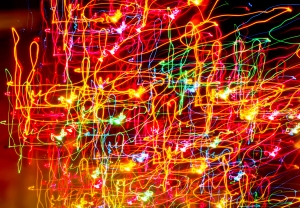Not long before I read about ”Open Networked Learning” on Twitter, I had discovered the existence of the concept PLN – Personal Learning Network. And I had also realized, that Twitter could be a PLN. And now I have been engaged in “Open Networked Learning”, a temporary community of practice based on participation culture and problem based learning, which I by now consider to be part of my Personal Learning Network. I have gained knowledge about and perspectives on Personal Learning Networks that I didn’t have before, and I won’t hesitate to emphasize the importance of this experience by quoting a definition of PLN that suits me well:
“The result of networking is a personal professional network, i.e., an egocentric, personally and intentionally created network of people set up by an individual specifically in the context of her professional activities. This network gathers a heterogeneous circle of people, distributed across different groups and places, and connected to the individual with connections of varying degrees of strengths…” (Rajagopal, Brinke, Van Bruggen and Sloep 2012).
To me, “Open Networked Learning” has been characterized by a very quick and efficient introduction to a field and its experts, its gatekeepers, a greater variety of materials, links, support tools and social media. It has given me a sense of having a grip of the concepts, the issues, the perspectives and the discussions of the field, that it would otherwise have taken me ages to read me into. And as Wenger puts it: “Rather than contrasting a community here and a network there,…it is more useful to think of community and network as two types of structuring processes. Community emphasizes identity and network emphasizes connectivity.” (Wenger 2010:10). I expected to meet a community of practice and found a network that enhanced my understanding of networked learning.
The networks at work within “Open Networked Learning” as a community of practice also gave me a multi-perspective on the subject matter, e-learning or online learning, while involving a variety of digital tools, social media, social bookmarks and group constellations. It requires a balance of complexity – a balance between communication, pedagogy and technology. But it is also the strength of networks – even Personal Learning Networks:
“Both strong and weak connections contribute to the individual’s learning: strong ties allow for active collaboration on knowledge creation, whereas weak ties are sources for new information, knowledge and ideas…As the dichotomy of strong and weak ties is not self-evident, more refinement is needed…For personal networks, Grabher and Ibert (2008) proposed a three-layered approach, consisting of a communality layer (strong ties), a sociality layer (weak ties) and a connectivity layer (very weak ties).” (Rajagopal, Brinke, Van Bruggen and Sloep 2012).
“We believe the intentionality of the professional is the strongest at the sociality layer, as contacts in this layer are the most mobile within someone’s personal network. Depending on the intentions of the professional, these ties have the potential to become stronger connections or develop into even weaker ties. An individual can therefore create and orchestrate ties to effectively support learning needs and potentially use technology to support this network, effectively making it a personal learning network (PLN).” (Rajagopal, Brinke, Van Bruggen and Sloep 2012).
Further reading:
Rajagopal, K., Joosten–ten Brinke, D., Van Bruggen, J. Sloep, P. (2012) Understanding personal learning networks: Their structure, content and the networking skills needed to optimally use them. First Monday, Vol.17, No 1 – 2 January.
Wenger, E. (2010). Communities of practice and social learning systems: the career of a concept. In Social learning systems and communities of practice (pp. 179-198). Springer London.
Elna Mortensen

Dear Elna
Thanks a lot for your concluding remarks on your learning pathways and slo about the course as such and the network
As you know I think your blogs are excellent, both to content and format
Please keep blogging about your thoughts and why not tweet them out
As Dewey the Guru says, learning by doing is the best way to learn and to be motivated
Thus I think as for this course one just have to learn by doing and go through different kind of topics and tools, and to use them on daily base as in the course
As you said yourself, going through this kind of new landscape would have taken year doing it yourself
..and to learn you need to have some kind of compass, but aslo some safe environment for trial and error
I think it is the same with students, if we would like to change anything we have to work with digitalisation throughout the curricula, like course and learning design, learning outcomes, assessements, and to use different wayw with the tools and ways we now have opportunities to use due to Internet, social media and online tools, thus we can also increase personalisation and not just use the same ways for everyone and just use some of the colours in our palet, but depending aim and context have possibilities
Keep going, and good luck
Thanks for your participation and refllections during the course
Caring is sharing, sharing is caring
Ebba
LikeLike